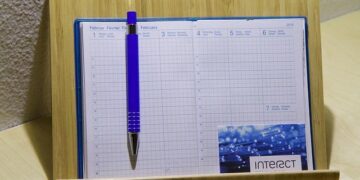If you’re like most guitarists, you started to solo by learning the minor pentatonic or blues scale. But after a while, running the blues scale up and down got to sounding like, well, just playing a scale. In this lesson, I’ll teach you how to add variety to your playing by using the open strings in combination with notes of the minor pentatonic and blues scales. You’ll learn a few cool licks and then put them to use in a simple blues solo that you can tap into as the inspiration for your own leads and improvisations.
As shown in Example 1, start with the G minor pentatonic scale (G Bb C D F). Played in different areas of the neck and in different ways, these five simple notes can be very powerful.
Example 2 illustrates a basic drone effect, where a note or chord is continuously sustained throughout a passage or piece. In this lick, the open G string is used as an every-other-note drone, alternating with different notes of the scale on the fourth string.
In the key of G, the open third string is the root note, or home base. You can always return here if you get lost, and it will—most of the time—sound right. Play Ex. 2 with alternate picking: downstrokes on the beats and upstrokes on the ands. In this lick, that means you’ll use downstrokes on the fourth string and upstrokes on the third.
Expanding on the drone idea, Example 3 moves further down the scale to the fifth string and includes a new note, a fourth-fret Db. This line is derived from the G blues scale (G Bb C Db D F), which is similar to the G minor pentatonic, but has an even bluesier quality with that one extra note, the flatted fifth.
You can stick with alternate picking here, but I prefer hybrid picking, using a plectrum on the fretted notes and my middle finger to pluck the open string. This works well for several reasons. It’s economical; when you pick the notes on the fifth string, you don’t have to jump over the fourth string to play the third string. You can also get a lot of speed with this technique, and using your finger (instead of a pick) provides a crisp, snappy sound.
Add Pull-Offs and Hammer-Ons
Another cool way to use the open G string with the minor pentatonic or blues scale is to play pull-offs from scale tones to the open string. Begin Example 4 by stopping the third string at the third fret with your first finger. Pick the note once, then pull your finger off the string, allowing the open G to sound. This time stay on the G string as you move up the blues scale to the C (fifth fret), D (seventh fret), F (tenth fret), and G again (12th fret), pulling off to the open G each time. Remember, for every two notes, you only pick the string once.
The cool hammer-on triplet lick in Example 5 will be a great addition to your bag of blues tricks. There are two concepts you’ll need to absorb here: the physical act of playing the hammer-on and the feel of the eighth-note triplet (three evenly spaced eighth notes per beat).
Some guitarists at first have a hard time snapping their fingers and hitting the right string. This should be a quick and forceful maneuver; practice it until you are able to do so consistently. To play the triplet, start by picking the open D string, use your first or second finger to hammer on to the third fret, and pick the open string with an upstroke. To get the feel of the triplet, count, “One-and-a, two-and-a, three-and-a, four-and-a.” Tap your foot as you say each number; that’s the downbeat.
Another way to use the open G as a drone with triplets is shown in Example 6. Here, in addition to playing the open G string, fret two strings on either side of the open G.
Each pair of fretted notes makes up a sixth interval, first B/G, followed by A/F, G/E, and F/D. These descending sixths are commonly used in blues and country playing. Fret the first two triplets with your first and second fingers on strings 2 and 4, respectively. Play the next two with your third and second fingers on those strings. As for picking, I recommend using a downstroke on the downbeat and upstrokes on the second and third notes of each triplet: down-up-up.
Putting It All Together
Using the techniques you’ve learned in this lesson, now try a short solo. As shown in Example 7, “Open-String Blues” is based on the standard 12-bar form in G, using the I, IV, and V chords (G5/G6, C5/C6, and D5/D7). To accompany this solo, refer to the chord frames, which depict a common shuffle pattern, best strummed in eighth notes.
The first four bars are played over a G chord. Use your third finger to play the first note—this will put you in good position to play the rest of the phrase. To slide the note, keep your third finger on the string and move your entire hand position from the third to the fifth fret; practice this move a few times so that it feels solid and natural. You can also use a hammer-on from the third to fifth fret or simply omit that third-fret F.
The bends in measure 2 are very slight (less than a half step, or one fret) and are like snaps that resolve on the open strings. For the bend-and-release move in bar 4, stop the fifth-fret C with your third finger, using your second finger behind it to help push the string upwards. Bend the note a half step, matching the pitch of the sixth-fret Db, and let it continue to sound as you release the bend back to the C without picking the string.
The rest of the example is taken from the licks you’ve already learned, with some modifications in the phrasing to make it sound more like an improvised solo and less like an exercise. Open strings can give your solos extra push and color. Use these moves to inspire your own phrases and licks using combinations of fretted and open notes. You can also try these techniques in other keys, such as E (remember, you have two E strings for drones), A, and D. The possibilities are endless.

This article originally appeared in the May/June 2024 issue of Acoustic Guitar magazine.
Originally published in the March 2006 issue of Acoustic Guitar.
>>> Read full article>>>
Copyright for syndicated content belongs to the linked Source : AcousticGuitar – https://acousticguitar.com/open-strings-blues-basics/

































